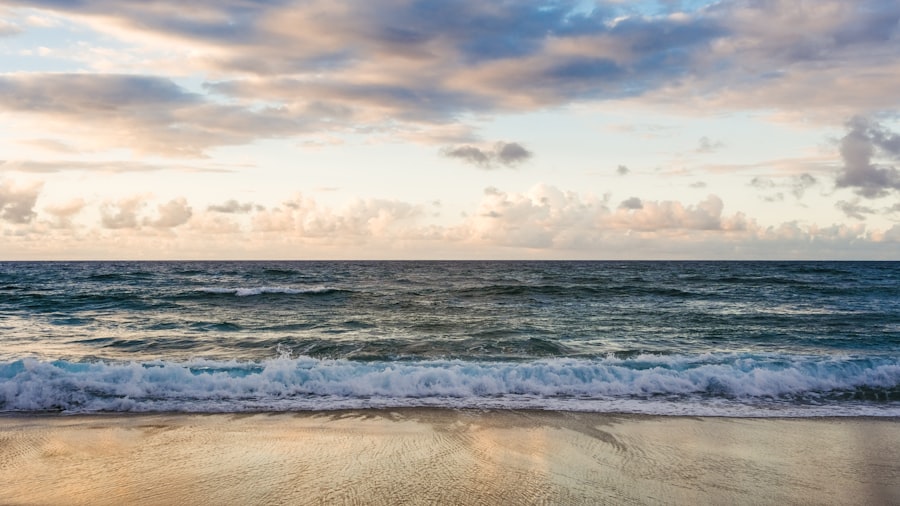Exploring the Hidden Gems of Sebu Island
Description
Sebu Island, a hidden gem in the Philippines, is often overshadowed by its more famous neighbors like Boracay and Palawan. Nestled in the southern part of the archipelago, this island is part of the province of South Cotabato and is known for its stunning landscapes, rich cultural heritage, and warm hospitality. The island is characterized by its lush greenery, rolling hills, and pristine waters, making it a paradise for nature lovers and adventure seekers alike.
Sebu Island is not just a destination; it is an experience that immerses visitors in the local way of life, offering a glimpse into the traditions and customs of the indigenous people who call this island home. The island’s name, Sebu, is derived from the local word “sebu,” which means “to be calm” or “to be peaceful.” This tranquility is palpable as one explores the island’s serene environment, where the hustle and bustle of modern life feels worlds away. Sebu Island is also known for its diverse ecosystems, which include freshwater lakes, rivers, and lush forests teeming with wildlife.
The island’s unique geography and climate create a perfect backdrop for various outdoor activities, making it an ideal destination for those looking to escape the ordinary and embrace the extraordinary.
Key Takeaways
- Sebu Island is a hidden gem in the Philippines, offering a unique blend of natural beauty, rich history, and vibrant culture.
- Off-the-beaten-path destinations on Sebu Island provide opportunities for immersive and authentic travel experiences away from the crowds.
- Local cuisine and culinary delights on Sebu Island showcase a diverse range of flavors and ingredients, reflecting the island’s cultural heritage.
- Cultural and historical landmarks on Sebu Island offer insight into its storied past, with ancient ruins and traditional festivals waiting to be explored.
- Outdoor adventures and nature escapes on Sebu Island include hiking, diving, and wildlife encounters, allowing visitors to connect with the island’s stunning landscapes and biodiversity.
Off-the-Beaten-Path Destinations
While many travelers flock to popular tourist spots, Sebu Island offers a plethora of off-the-beaten-path destinations that promise to captivate the adventurous spirit. One such location is Lake Sebu, a stunning body of water surrounded by rolling hills and vibrant greenery. This lake is not only a visual feast but also a cultural hub for the T’boli people, an indigenous group known for their rich traditions and artistry.
Visitors can take a boat ride across the lake, marveling at the breathtaking scenery while learning about the T’boli’s unique way of life. The lake is also home to several floating cottages where travelers can enjoy local delicacies while soaking in the tranquil atmosphere. Another hidden treasure on Sebu Island is the Seven Falls, a series of cascading waterfalls that are both awe-inspiring and serene.
Each waterfall has its own distinct character, with some surrounded by lush vegetation while others plunge dramatically into deep pools below. The journey to reach these falls involves a scenic hike that rewards adventurers with stunning views of the surrounding landscape. For those seeking a more leisurely experience, zip-lining across the falls offers an exhilarating perspective of this natural wonder.
The Seven Falls exemplify the untouched beauty of Sebu Island and provide an opportunity for visitors to connect with nature in a profound way.
Local Cuisine and Culinary Delights

Sebu Island’s culinary scene is a delightful reflection of its rich cultural heritage, offering a variety of flavors that tantalize the taste buds. The island’s cuisine is heavily influenced by the indigenous T’boli people, who have preserved their traditional cooking methods over generations. One must-try dish is “tinola,” a savory chicken soup infused with ginger and served with fresh vegetables.
Another culinary highlight is “bulu,” a traditional T’boli dish made from glutinous rice wrapped in banana leaves and steamed to perfection.
The preparation of bulu is often a communal activity, with families coming together to create this delicacy during special occasions. Visitors can also indulge in “suman,” a sweet rice cake that is typically served with coconut milk or sugar. These dishes not only provide a taste of Sebu Island’s flavors but also offer insight into the island’s cultural practices surrounding food and community.
Cultural and Historical Landmarks
| Landmark | Location | Year Built | Visitor Count |
|---|---|---|---|
| Taj Mahal | India | 1632 | 7-8 million |
| Great Wall of China | China | 7th century BC | 10 million |
| Colosseum | Italy | 70-80 AD | 7.6 million |
| Eiffel Tower | France | 1889 | 7 million |
Sebu Island is steeped in history and culture, with several landmarks that tell the story of its past. One significant site is the T’boli Museum, which serves as a repository of artifacts and exhibits that showcase the rich heritage of the T’boli people. The museum features traditional clothing, musical instruments, and intricate beadwork that highlight the artistic talents of this indigenous group.
Visitors can engage with knowledgeable guides who share stories about T’boli traditions, rituals, and their connection to the land.
This church not only serves as a place of worship but also as a gathering point for the local community.
Its architecture reflects both Spanish colonial influences and indigenous design elements, symbolizing the blending of cultures that has occurred over centuries. The church hosts various religious festivals throughout the year, providing visitors with an opportunity to witness vibrant celebrations that showcase local customs and traditions.
Outdoor Adventures and Nature Escapes
For those seeking adventure, Sebu Island offers an array of outdoor activities that cater to thrill-seekers and nature enthusiasts alike. Hiking trails wind through dense forests and up steep hills, leading to panoramic viewpoints that offer breathtaking vistas of the island’s natural beauty. One popular hiking destination is Mount Sumpong, which provides an exhilarating trek for experienced hikers while rewarding them with stunning views from its summit.
Water activities are also abundant on Sebu Island. Kayaking on Lake Sebu allows visitors to explore its tranquil waters while observing diverse bird species and other wildlife along the shoreline. Fishing enthusiasts can try their luck at catching tilapia or other freshwater fish in the lake’s abundant waters.
For those who prefer a more leisurely experience, picnicking by the lakeside or simply soaking in the sun while enjoying the serene surroundings can be equally rewarding.
Hidden Beaches and Secret Coves

While Sebu Island may not be as famous for its beaches as other destinations in the Philippines, it boasts several hidden beaches and secret coves that are worth discovering. One such spot is Malabok Beach, a secluded stretch of sand that offers tranquility away from crowded tourist areas. The beach is framed by lush palm trees and crystal-clear waters, making it an ideal location for sunbathing or enjoying a quiet swim.
Another hidden gem is Buluan Beach, known for its stunning rock formations and vibrant marine life. Snorkeling in these waters reveals an underwater paradise filled with colorful corals and tropical fish. The beach’s remote location ensures that visitors can enjoy its beauty without the distractions of commercialism or large crowds.
These hidden beaches provide an authentic experience of Sebu Island’s natural charm and are perfect for those looking to unwind in a serene environment.
Unique Shopping and Souvenir Finds
Shopping on Sebu Island offers a unique opportunity to take home authentic souvenirs that reflect the island’s culture and artistry. Local markets are filled with handcrafted items made by skilled artisans from the T’boli community. One popular item is “t’nalak,” a traditional woven fabric made from abaca fibers that feature intricate designs symbolizing dreams and aspirations.
Purchasing t’nalak not only supports local artisans but also allows visitors to bring home a piece of Sebu’s cultural heritage. In addition to textiles, visitors can find beautifully crafted wooden sculptures and jewelry made from local materials such as shells and stones. These items often carry significant cultural meanings and are perfect for those looking to commemorate their visit to Sebu Island with something truly special.
Engaging with local artisans while shopping provides insight into their craftsmanship and traditions, making each purchase more meaningful.
Insider Tips for Exploring Sebu Island
To make the most of your visit to Sebu Island, consider some insider tips that can enhance your experience. First, it’s advisable to learn a few basic phrases in the local dialect to connect with residents on a deeper level. The warmth of the local people often shines through when they see visitors making an effort to communicate in their language.
Additionally, timing your visit can significantly impact your experience. The best time to explore Sebu Island is during the dry season from November to April when outdoor activities are more enjoyable due to pleasant weather conditions. However, if you prefer fewer crowds, consider visiting during shoulder months like May or October.
Lastly, embracing local customs can enrich your journey on Sebu Island. Participating in community events or festivals allows you to immerse yourself in T’boli culture while forging connections with locals. Whether it’s joining in traditional dances or sampling local dishes at community feasts, these experiences create lasting memories that go beyond typical tourist activities.
Sebu Island remains an enchanting destination waiting to be explored by those willing to venture off the beaten path. With its breathtaking landscapes, rich cultural heritage, and warm hospitality, it offers an authentic glimpse into life in this beautiful corner of the Philippines.
If you’re interested in exploring more about the culture and history of Sebu Island, you may want to check out this article on Panini sticker album. This article delves into the world of collecting and trading Panini stickers, which can often feature images and information about various places, including Sebu Island. It’s a fun and interactive way to learn more about different locations around the world, making it a great complement to your research on Sebu Island.
FAQs
What is Sebu Island?
Sebu Island is an island located in the Philippines, specifically in the Visayas region. It is the second largest island in the Philippines and is known for its beautiful beaches, rich culture, and vibrant marine life.
What are the popular attractions on Sebu Island?
Some popular attractions on Sebu Island include the historic Magellan’s Cross, the stunning Kawasan Falls, the vibrant Sinulog Festival, and the picturesque beaches of Moalboal and Bantayan Island.
What is the climate like on Sebu Island?
Sebu Island has a tropical climate with two distinct seasons: the dry season from November to April, and the wet season from May to October. The island experiences warm temperatures year-round, with occasional typhoons during the wet season.
What are the transportation options to get to Sebu Island?
Travelers can reach Sebu Island by flying into Mactan-Cebu International Airport, which is the main gateway to the island. From there, they can take a taxi, bus, or ferry to reach their desired destination on the island.
What are the popular activities to do on Sebu Island?
Some popular activities on Sebu Island include snorkeling and diving to explore the vibrant marine life, island hopping to visit nearby islands and beaches, exploring the historic sites and museums, and enjoying the local cuisine and nightlife.





